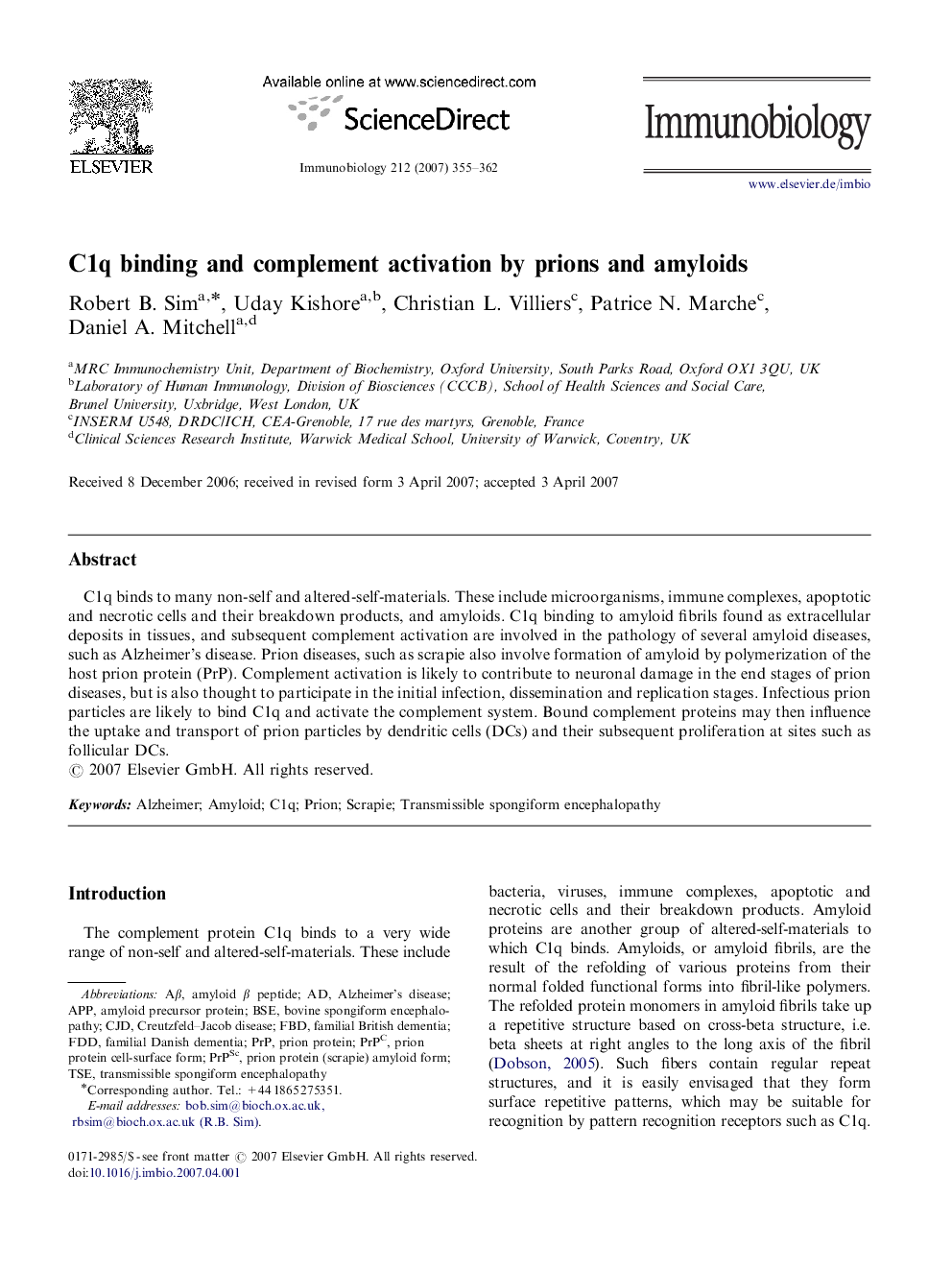| Article ID | Journal | Published Year | Pages | File Type |
|---|---|---|---|---|
| 8472165 | Immunobiology | 2007 | 8 Pages |
Abstract
C1q binds to many non-self and altered-self-materials. These include microorganisms, immune complexes, apoptotic and necrotic cells and their breakdown products, and amyloids. C1q binding to amyloid fibrils found as extracellular deposits in tissues, and subsequent complement activation are involved in the pathology of several amyloid diseases, such as Alzheimer's disease. Prion diseases, such as scrapie also involve formation of amyloid by polymerization of the host prion protein (PrP). Complement activation is likely to contribute to neuronal damage in the end stages of prion diseases, but is also thought to participate in the initial infection, dissemination and replication stages. Infectious prion particles are likely to bind C1q and activate the complement system. Bound complement proteins may then influence the uptake and transport of prion particles by dendritic cells (DCs) and their subsequent proliferation at sites such as follicular DCs.
Keywords
Related Topics
Life Sciences
Biochemistry, Genetics and Molecular Biology
Cell Biology
Authors
Robert B. Sim, Uday Kishore, Christian L. Villiers, Patrice N. Marche, Daniel A. Mitchell,
